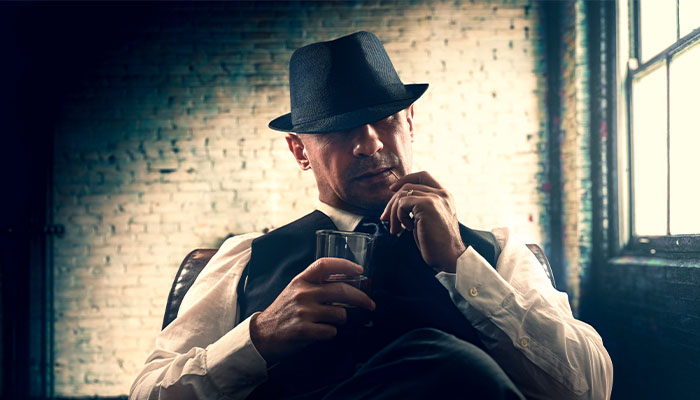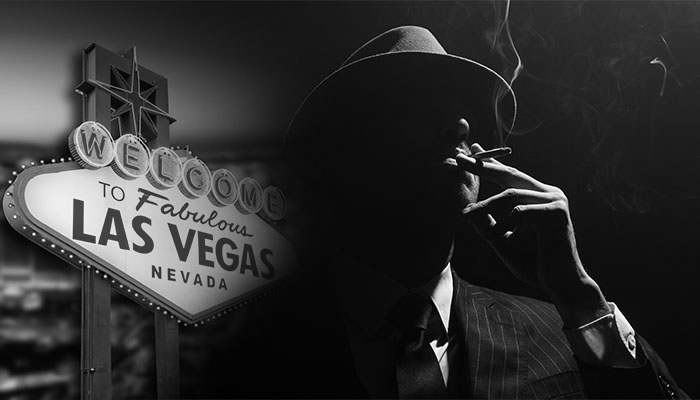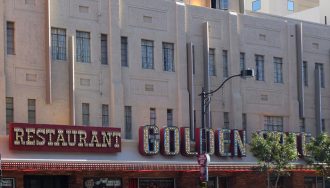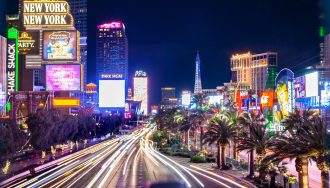The Most Famous Las Vegas Mobsters That Shaped Sin City
 Las Vegas Mob History
Las Vegas Mob History
Did the mob come from Sin City, or did Sin City come from the mob? The history of Las Vegas mobs is as action-packed and interesting as it is revelatory about how the city of Las Vegas perhaps owes more to the mob than one could imagine. Read on to learn more, through this curated list of Las Vegas mobsters.
Famous Las Vegas Mobsters
Las Vegas, as we know it today, exists in this shape and form only because of enterprising mobsters who did everything they could to make it the world’s city of sin. In this article, we cover the stories of some of Las Vegas’s most famous – or rather, infamous – mobsters, including some that could unofficially well be Vegas’s founding fathers. Before there were legal online casinos in the US, there was the mob.
- 🎴 Rise of the Las Vegas Mafia
- 🕵️♀️ Fall of the Las Vegas Mafia
- 🎰 Jim Ferguson – The OG
- 🔍 The Most Famous Las Vegas Mobsters
- ❓ FAQs
Rise of the Las Vegas mafia
Let’s make no bones about it – the mob was a group of violent, greedy, and selfish thugs whose mere existence led to the loss of countless lives. At the same time, we still need to accept the fact that Vegas probably wouldn’t be what it is today if not for the mob.
In the 1940s, Las Vegas started to see the rise of mob bosses who would eventually take control of their own swathes of territory. It was these bosses who saw an opportunity in Vegas, and decided to invest in setting up the gambling industry in Vegas as we still know it today.
Until the 1960s, what came to pass was a period where organized crime was practically consolidated in Vegas. With the success of the mob’s efforts, the Strip was formed and every casino and casino executive was in the mob’s deep pockets. The mob would launder all their money to their own casinos and whitewash it by using it to run business and pay bribes.
This was also a violent time. Casino executives were also empowered to use violent means at their own discretion, be it against customers or anyone else who rubbed them the wrong way – and with the cops also on the mafia’s payroll, it’s no surprise that this went unchecked.
If you thought that the Las Vegas mafia lived and operated in secrecy, that couldn’t be further from the truth. Most mobsters lived a public life – and an opulent one, at that – while also dealing with very high profile investors such as reputed Wall Street Banks and even the Mormon Church. Not all these gangsters lived in the US, allowing them to cozy up to dictators and businessmen around the world – thus allowing them to control gambling in Vegas by proxy.
Fall of the Las Vegas mafia
It was only in the late 1960s that the mob started to fall. The government grew concerned with the rise of the Strip and the mob’s influence on so much commercial activity in the region, that it started regulating casinos and ordered them to maintain a “black book” – a book filled with the names of mafia bosses who were banned from entering casinos. While state officials clamped down on the commercial aspect of things, federal officials started hunting famous Las Vegas mobsters down.
When billionaire Howard Hughes went on a shopping spree for a cool $300 million, buying up mob-owned casinos and hotels in Vegas, their influence in the Strip considerably dwindled. Skimming operations, however, would continue for a few more years – since the employees at these casinos were still the same good people employed by the mob.
In the years to come, corporate conglomerates would tighten their grip on the Strip while almost all the famous Las Vegas mobsters were arrested – or found dead – across the country. The mob’s influence in Vegas was decimated, but the legacy of what they built lives to this day. While the mob certainly needed to be stopped, they unwittingly did some good by setting the foundations for the entertainment capital of the world – one that sees millions of visitors and employs countless deserving individuals.
Perhaps that’s why – to this day – every effort has been made to preserve the history of Las Vegas gangsters, including a mob museum that is a big tourist attraction. It just goes to show how they were definitely villains, but will always be an inseparable part of Las Vegas’s storied history.
Jim Ferguson – the OG
- Name: Maier Suchowljansky
- Born: July 4, 1902
- Died: January 15, 1983
Before the casino mafia started by Siegel and Lansky, came Jim Ferguson – the first gangster to ever set foot in Las Vegas in the 1920s. Unlike the other mobsters on the list, he had no role to play in setting up the gambling scene in Las Vegas – but he was notorious enough to get federal attention and be considered a “menace to society” by the US government.
When he arrived on the scene, sex work, gambling, and liquor were all illegal but thriving in Vegas, controlled by the same groups for over two decades. Ferguson saw this as an opportunity, assuming that anyone who stayed in power for that long was vulnerable to a takeover. He was right.
Using a grand jury’s reports on the city’s thriving illegal activities, Ferguson identified weaknesses in the mob’s structure and went about his plan with the aid of local law enforcement and politicians. He took over the city’s sex work and bootlegging operations, while paying considerable fees to law enforcement officials for their cooperation. Apart from one charge of aggravated assault against his rival, Ferguson went about his operations legally unscathed. He continued to bootleg across Vegas and completely controlled the liquor mafia.
Federal agents were dissatisfied with the efforts of local law enforcement, and ultimately decided to start stepping in. Ferguson was fined numerous times for illegally selling alcohol, and while local officials came to his rescue every now and then, the buck stopped with him being sentenced to one year and one day in prison for controlling the liquor mafia in Vegas. Once he came out of prison, he learnt a cruel lesson – that a year is a long time in Vegas, and that every single one of his interests had been taken over by new faces, hand-in-glove with the same officials who were once loyal to Ferguson. He was obsolete.
The Most Famous Las Vegas Mobsters
This list of Las Vegas mobsters has been curated with some of the most interesting stories of mob bosses across Vegas’s history, including the unofficial “founding fathers” of the Las Vegas Strip.
| Las Vegas Gangster: | Dates Lived: |
|---|---|
| Meyer Lansky | 1902 – 1983 |
| Bugsy Siegel | 1906 – 1947 |
| Frank Cullota | 1938 – 2020 |
| Moe Dalitz | 1899 – 1989 |
| Guy McAfee | 1888 – 1960 |
Meyer Lansky

- Name: Maier Suchowljansky
- Born: July 4, 1902
- Died: January 15, 1983
There’s a reason why every list of famous Las Vegas gangsters has to start with Meyer Lansky. A part of the Jewish mob, Lansky and his associate Charles “Lucky” Luciano were instrumental in setting up the National Crime Syndicate that terrorized the United States. He also set up a gambling empire that spanned the whole world, owning points in casinos in the US, Bahamas, London, and more.
In the 1940s, Meyer Lansky was the first to identify an opportunity to turn Vegas into a hotspot for gambling, and financed a ‘friend’ of his to build Vegas’ first casino. The casino was called The Flamingo, and while it got off to a rocky start due to some mismanagement, the reasons for this mismanagement – even the living reasons – were ‘removed’ from the equation, allowing The Flamingo to eventually become profitable and set the foundation for the Strip as we know it today. From seeming almost doomed to fail, The Flamingo eventually became the model to follow for other mob-backed casinos like the Thunderbird and Desert Inn.
What would follow was a period of dominance, where Lansky would consolidate his reign over organized crime in America. Lansky’s contractors had a presence in several regions like Dallas, Portland, and Minneapolis – where they would conduct several illegal operations and underreport their earnings, only to send the siphoned off earnings to Lansky and other investors in the operation.
Another intriguing aspect of Lansky’s story is that while mob bosses were being convicted right, left, and center across the country in the late 60s, the only charge Lansky was convicted of was illegal gambling. Rumors suggest that Lansky escaped conviction for his roster of heinous crimes only by blackmailing officials in high places with sexually compromising photographs. In 1983, Lansky died worth nothing on paper – though the FBI estimated that he likely left behind $300 million to his family via other, ‘paperless’ means.
Bugsy Siegel
- Name: Benjamin Siegel
- Born: February 28, 1906
- Died: June 20, 1947
Remember how we mentioned that Lansky started The Flamingo by financing a ‘friend’? That friend was none other than Bugsy Siegel.
With a keen eye for potential hotspots for organized crime, Bugsy Siegel entered Vegas in the early 1940s to take over the race wire dissemination services – wherein horse racing results would be wired to bettors. These efforts were also financed by his good friend, Meyer Lansky. The horse racing operation proved to be a huge success, following which Siegel set his sights on taking over the Las Vegas Strip, El Cortez, and Downtown Las Vegas by controlling the gambling industry.
Siegel was financed by and tasked with building The Flamingo by Lansky. As for his ambition, Siegel’s was sky high – he wanted The Flamingo to be the most exquisite building that money could buy, but ironically didn’t even have the money to build it, even with Lansky’s backing. Checks bounced and costs soared. The air conditioning routinely failed. Large swathes of the building were left unfinished while guests were troubled by construction noises and unfinished rooms. The Flamingo had officially tanked, all thanks to Siegel’s gross mismanagement of funds.
The Las Vegas mafia grew impatient and wanted to off Siegel for not bringing in any profits, but he was given a second chance at Lansky’s insistence. Siegel stopped letting his ambition be his own worst enemy, and went about fixing the situation at The Flamingo to a point where it finally became profitable and had a good reputation.
Unfortunately for Siegel, this wasn’t enough for the mob. Remember how we said that every reason for The Flamingo’s mismanagement was ‘removed’? In 1947, Siegel was shot several times in his home with a military grade carbine rifle, including two shots in the head. While his body was still warm, Lansky’s associates entered The Flamingo, took control of the casino’s operations and turned them around to the mob’s satisfaction. His murder officially remains unsolved.
Frank Cullota
- Name: Frank John Cullotta
- Born: December 14, 1938
- Died: August 20, 2020
In 1979, Frank Cullota made the move to Vegas to join Tony Spilotro’s gang. Spilotro, who used to be a key figure in the loan shark mafia and other rackets, had started the Hole In The Wall burglary gang that robbed establishments by – you guessed it – drilling holes in their walls.
Cullota had already committed a few murders on Spilotro’s orders before the gang was busted in a heist gone wrong in 1982. Shortly after the bust, the FBI presented Cullota with proof that Spilotro was planning to off him, which convinced him to make a deal with the prosecution and enter witness protection after being released.
Moe Dalitz
- Name: Morris Barney Dalitz
- Born: December 25, 1899
- Died: August 31, 1989
No list of Las Vegas mobsters would be complete without Mr. Las Vegas himself. Dalitz is one of the most influential figures in Las Vegas’s growth story, after he invested money earned from bootlegging and illegal gambling into developing Vegas. He operated a number of casinos including the Desert Inn, but his crowning jewel was the Las Vegas Convention Center. Arguably, no individual did more for Vegas’s gambling scene in the 20th Century – turning it from a casino hotspot to a resort and entertainment capital of the world.
Guy McAfee
- Name: Guy McAfee
- Born: August 19, 1888
- Died: January 20, 1960
On the scale of good to bad cop, McAfee made it amply clear where he stood. With prior history of serving as a firefighter, McAfee was the head of LA’s vice squad. The catch was that he also secretly owned a number of brothels and gambling saloons, and misused his position to develop strong ties with organized crime.
Known as the “Capone of LA”, he eventually moved to Vegas and operated a number of clubs and casinos including starting the Golden Nugget. What McAfee will be remembered for the most, is being the first person to call the Las Vegas boulevard the Las Vegas Strip – inspired by the Los Angeles Strip.




